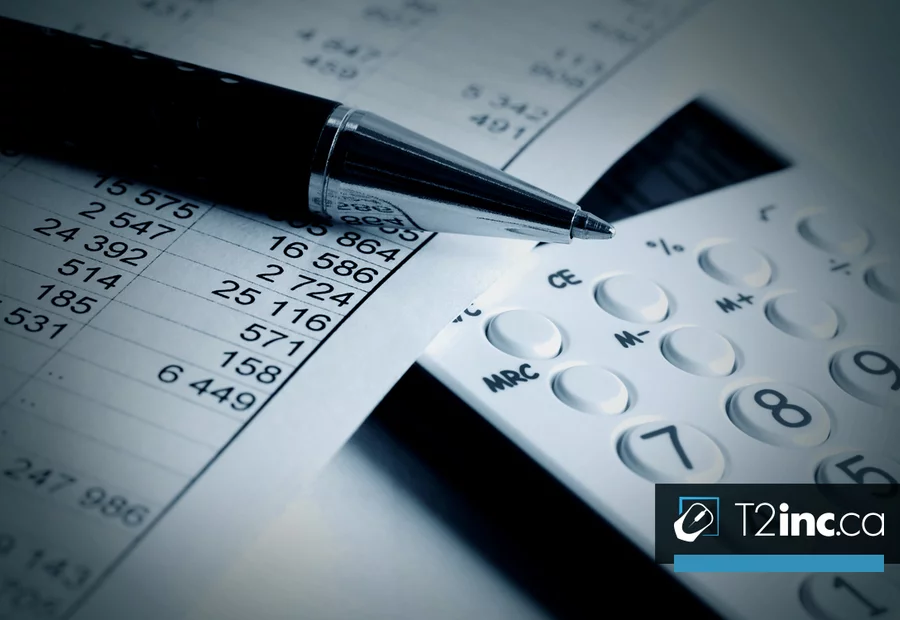Capital Gains Tax in Canada: A Practical Guide to Optimizing Your Taxes and Maximizing Your Profits

Capital gains in Canada are essential to understanding and optimizing business taxation. Whether you're selling capital property, such as real estate or stocks, it's important to know about capital gains and how they are taxed. By understanding what is exempt from paying capital gains, you can reduce the tax payable, minimize your capital gains tax liability, and maximize your profits.
This guide will answer your most important questions, including: how to distinguish between income tax and capital gains, what deductions are available, and how to use capital losses to offset taxable capital gains.
What is a capital gain?
A capital gain occurs when you sell a capital property for more than its original cost. This can include types of capital property such as real estate, stocks, land, or other investments.
A case in point:
- You buy stock for $10,000 and sell them three years later for $15,000.
- After adjusting the adjusted cost base (ACB) of $10,200 (including brokerage fees), your capital gain realized is $4,800.
- Under Canadian law, only 50% of this amount ($2,400) is taxable. This is the taxable portion of the capital gain.
The difference between capital gains and business income
Capital gains and business income differ in their origin and tax treatment.
A capital gain is realized when you sell an asset (such as real estate or stock) for more than its original cost. Only a portion of capital gains (50%) is subject to capital gains tax and included in your total taxable income. In contrast, corporate income is derived from ordinary business activities, such as selling products or services, and is fully taxable at the corporate tax rate.
These distinctions reflect that capital gains are considered taxable income arising from long-term investments, while business income comes from current operations. Understanding this difference is crucial for optimizing your overall tax liability.
Quick summary
| Criteria | Capital gains | Corporate income |
|---|---|---|
| Origin | Sale of assets not related to current operations | Regular business activities |
| Taxation | 50% taxable | 100% taxable |
| Example | Sale of real estate or shares | Sales of products or services |
How do you calculate taxable capital gains for businesses?
The capital gains tax rate for Canadian businesses follows specific rules that differ from those for individuals. These rules take into account factors such as the type of asset, the period of ownership and the status of the business. Certain tax provisions, especially for smaller businesses, offer lower tax rates or exemptions to encourage investment and growth.
To calculate a capital gain and determine the amount of tax you'll pay, you need to understand three key elements:
1. Adjusted Cost Base (ACB):
The ACB represents the original cost of the asset, including expenses related to acquisition (e.g., brokerage fees, legal fees).
- Example: If you bought a building for $500,000 and paid $10,000 in notary fees, your ACB would be $510,000.
2. Capital gain :
The difference between the sale price (proceeds of disposition) and the ACB is the capital gain.
- Example: If you sell the building for $600,000, the capital gain is $600,000 - $510,000 = $90,000.
3. Taxable amount :
In Canada, 50% of the realized capital gain is taxable.
- Example: In this case, $90,000 x 50% = $45,000 will be included in your taxable income.
Tip: Keep accurate records of each transaction (receipts, invoices, supporting documents) to simplify your calculations and tax returns, especially in the event of an audit by the IRS.
Lifetime capital gains exemption: maximize your opportunities
The Lifetime capital gains exemption (LCGE) is a critical tax measure that helps Canadian business owners reduce the amount of tax payable on any capital gains from qualifying assets. In 2025, it exempts up to $1.25 million of taxable gains on the sale of capital properties such as small business shares or farm and fishing properties.
This exemption provides several strategic benefits to Canadian business owners:
- Reduced tax burden: More of the gain from the sale of eligible assets can be retained, allowing for reinvestment in other projects or preparation for retirement.
- Encourage investment: By reducing the tax burden, it encourages greater investment in small businesses, stimulating economic growth and innovation.
- Simplify estate planning: When transferring a family business, the LCGE reduces the capital gains tax owed, facilitating the transfer of assets.
Eligibility Criteria for Lifetime Capital Gains Exemption (LCGE)
In order to benefit from this exemption, the following criteria must be met:
- Types of eligible assets:
- Small business stock: The stock must be owned by a Canadian-controlled private corporation (CCPC) and meet certain criteria, including the use of at least 90% of the fair market value of the assets in eligible business activities at the time of sale.
- Farm or Fishing Property: Includes farms or fishing boats operated in Canada, subject to meeting criteria related to their use.
- Holding period:
- Eligible stock or property must have been held for at least 24 months prior to the sale.
- Business status:
- The business must be a Canadian-controlled private corporation (CCPC) and meet certain revenue, asset value and eligible activity thresholds.
Strategies to reduce capital gains taxes
Reducing capital gains taxes is a priority for any business owner looking to optimize profits and preserve financial resources for business development. By employing effective strategies, you can not only minimize your tax burden, but also maximize your ability to reinvest, plan for the future, and protect the financial stability of your business.
1. Reinvesting capital gains: Defer taxation and stimulate growth
In some jurisdictions, reinvesting the proceeds of a sale into new qualifying assets allows you to defer taxation of the capital gain until the new asset is sold.
This strategy, sometimes called "tax rolling", is particularly useful if you want to:
- Grow quickly by reinvesting in assets that generate new income or opportunities.
- Optimize your cash flow by deferring tax liabilities.
- Maximize your investments while complying with tax rules.
2. Using capital losses to reduce your tax liability
Capital losses can be used to offset capital gains realized, reducing the amount of tax owed. Excess losses can be carried back three years or carried forward indefinitely.
- How it works:
- Capital losses realized in a given year can be used to offset gains realized in the same year.
- If losses exceed gains, they can be carried back three years or carried forward indefinitely.
3. Proactive tax planning: take the long view
Implementing a tax planning strategy is an important step for any business owner who wants to reduce taxes while remaining compliant.
Stagger the sale of your assets over several tax years to smooth your income and avoid reaching high tax brackets. Also, be sure to maximize available exemptions, such as the LCGE or other federal or provincial incentives.
How to report capital gains in Canada
Declaring capital gains requires rigor and good documentation management. Here are the steps you need to follow to file correctly:
- Gather your documents
- Relevant statements and documents, such as T5008 slips listing asset sales transactions.
- Calculate your gain or loss
- Subtract the adjusted cost basis (ACB) and related expenses from the sale proceeds. This will determine whether you have a capital gain or loss.
- Complete the required forms
- Complete the appropriate tax forms (such as Schedule 3) to report your capital gains. Be sure to include all required information.
- Include information statements
- Review and file
- Read your return carefully to avoid mistakes. If necessary, consult a tax accountant or other professional to review your calculations and provide advice.
- Keep your records
- Retain all transaction-related documents, such as transaction statements, receipts, and returns, for at least six years. These documents may be needed in the event of an audit.
Deadlines for reporting capital gains
Capital gains must be reported on your business tax return for the year in which the sale or disposition of the asset occurs, even if no tax is due.
Failure to meet these deadlines can result in penalties and interest. To avoid these inconveniences:
- Keep accurate, up-to-date records of all capital gains transactions.
- File your return with the IRS on time.
T2inc.ca, your tax expert for Canadian corporate tax returns
Capital gains offer business owners a unique opportunity to optimize their tax situation. By understanding how a capital gain is calculated and applying strategies such as reinvestment or capital loss utilization, you can reduce your tax liability and efficiently reinvest your resources.
However, tax management of capital gains can be complex, especially when it comes to corporate tax returns. That's where T2inc.ca comes in. We specialize in the preparation and filing of T2 returns and CO-17 returns, ensuring your corporation's flawless compliance with Canadian tax laws. With our expertise, we can help you simplify your tax obligations and maximize your returns.
For more in-depth tax advice or complex strategies, we work with our expert tax partners to provide a comprehensive service tailored to your needs.
Rely on T2inc.ca for your business taxes and focus on what matters most: the growth and success of your business. Contact us today to learn more!
- What is a capital gain?
- The difference between capital gains and business income
- How do you calculate taxable capital gains for businesses?
- Lifetime capital gains exemption: maximize your opportunities
- Strategies to reduce capital gains taxes
- How to report capital gains in Canada
- T2inc.ca, your tax expert for Canadian corporate tax returns
Contact our experts
Have a question? Need help? Fill out our online form to get help from our experts.
Contact usNeed more help?
Contact us by filling out our form
Are you interested in our services, but would like more information before taking the plunge? Contact us today and one of our tax accountants will be in touch to help you.
At T2inc.ca, we're committed to helping business owners manage their company's tax affairs so they can grow their business.




